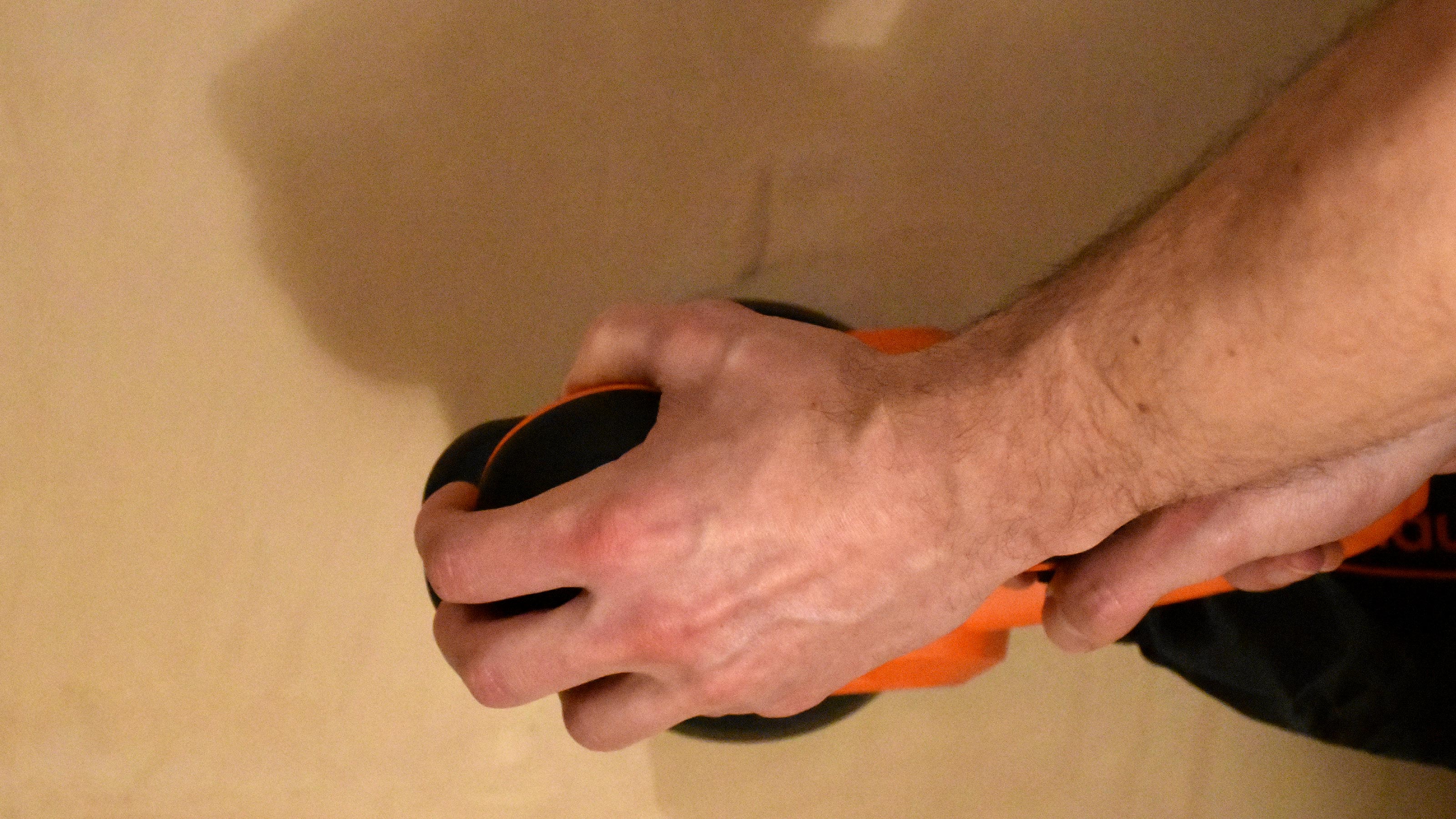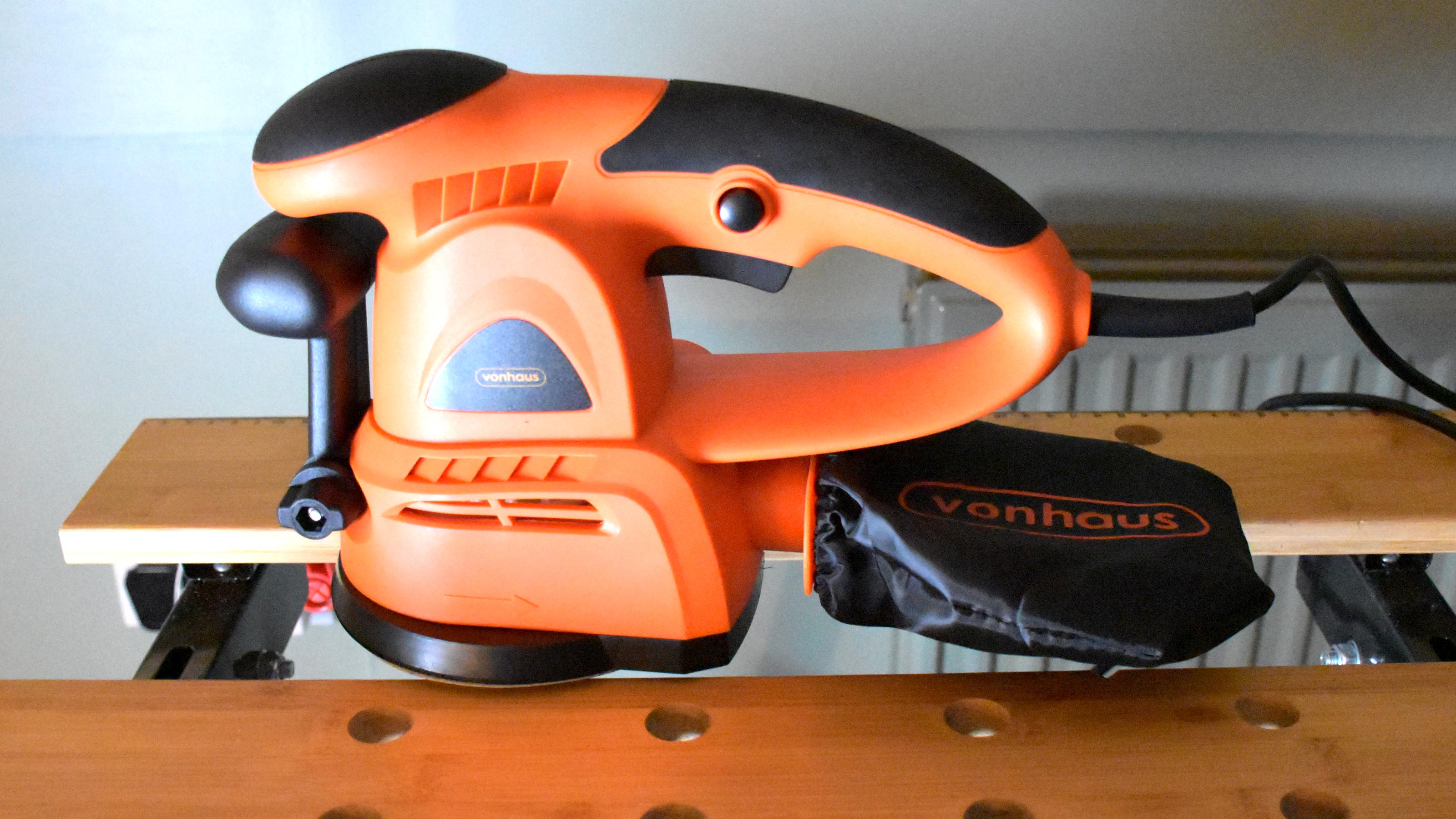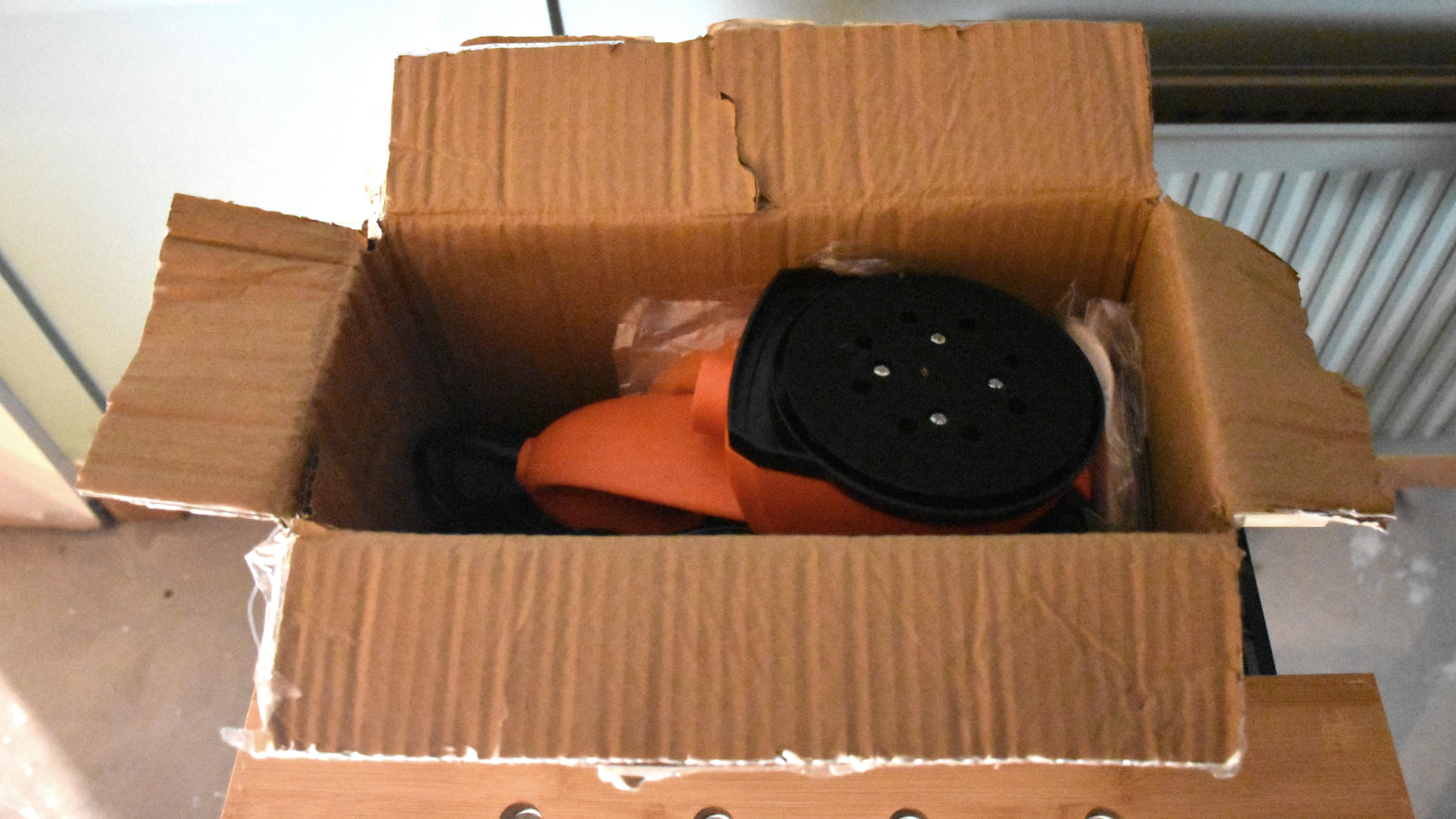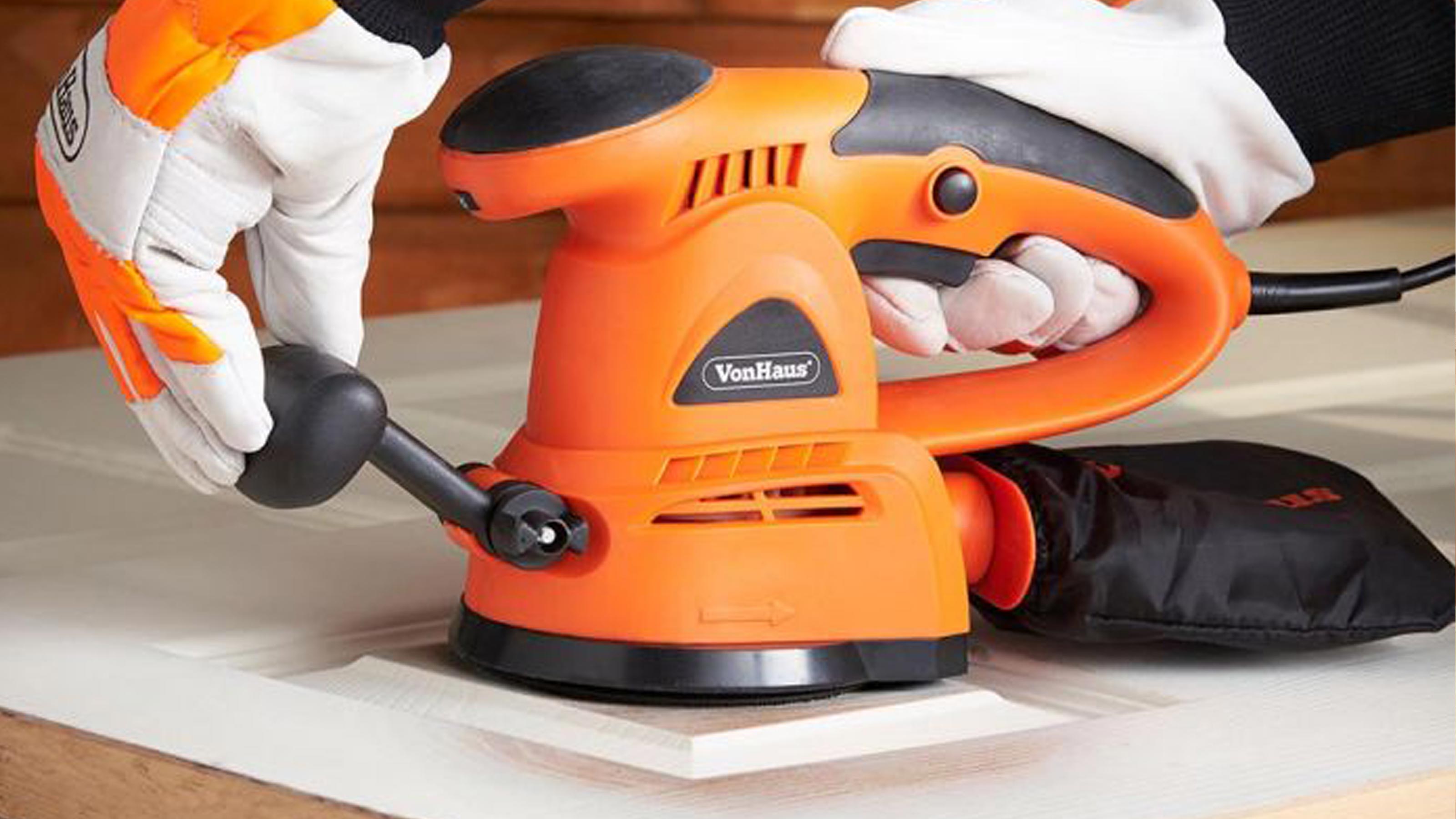Homebuilding Verdict
The VonHaus 3515091 Random Orbital Sander gives you immense sanding power in an affordable, no-fuss package. It’d be a great option for DIYers who have a few big sanding projects ahead of them, such as sanding all the walls in a room ahead of painting or wallpapering. With that said, the powerful action and heaviness of the VonHaus could rule it out for some users. And if you’re looking to do some detailed finishing work, you might be better off using a detail sander instead.
Pros
- +
Powerful sanding action
- +
Sands large areas efficiently
- +
Leaves a swirl-free finish, when used properly
Cons
- -
It’s a bit heavy
- -
Some users may prefer a cordless sander
You can trust Homebuilding & Renovating.
The VonHaus Random Orbital Sander (3515091) provides remarkable sanding power at a very reasonable price. It’s designed to sand large, flat areas of material – including wood, metal and plastic – without leaving the sorts of unsightly marks and swirls that can come with other sanding methods.
As the most powerful orbital sander in the VonHaus range, this tool would make a good choice for keen amateur DIYers and those undertaking fairly intensive building or renovation projects. If that sounds like you, read on to find out what happened when our reviewer took the 3515091 for a spin around his home reno site and why they thought its amongst the best orbital sanders on the market.
How effective is the Vonhaus Random Orbital Sander performance?
Model: VonHaus Random Orbital Sander (3515091)
Features: Dust-extraction port and dust-bag; soft-grip handle; multiple speed settings; lock-on switch
Power source: mains (corded)
Cable length: 2m
Input power: 430W
RPM: 6,000-13,000
Sanding surface/pad size: 125mm
Cable length: 2m
Weight: 2.4kg
Dimensions: H18.4cm x W27cm x D12.5cm
Warranty duration: Two years
We tested the 3515091 Random Orbital Sander by using it to sand plaster walls and various pieces of wood.
In our testing, the sander easily evened the surface of plasterwork, removing large splats of dried-on material along the way. Even when we used the sander on the lowest speed setting, it left a perfectly smooth surface with very little effort.
One of the key reasons to buy a random orbital sander is that this sub-category of sander tends to leave fewer sanding marks on the surface of whatever you’re sanding. This is thanks to the unpredictable rotation of the sanding pad.
We found that the VonHaus did pretty well at leaving the sanded area streak-free, with the most even results coming after the sander had been applied to the surface for an ample period.
We were impressed with this sander’s performance when sanding pieces of wood. Moving the sander back and forth, going with the grain of a rough wooden surface, we were able to achieve a smooth finish, pleasingly absent of swirl-marks.

VonHaus Random Orbital Sander
3 polishing pads
9 sanding pads (3 different grits)
Dust collection bag
Instruction booklet
When using this tool to finish wood, we’d advise using a light touch and a low setting, as the sander is pretty powerful relative to many other tools in its category. Its higher speed settings do come in handy for removing harder materials such as knots and splinters.
The VonHaus has a circular sanding surface with a diameter of 125mm — typical of an orbital sander designed for DIY use. This large surface gives you the capability to sand wide areas of material very efficiently. If you want to sand a wall or wooden panels, or polish car bodywork with a polishing pad, this would be a great sander for the job.
Having such a large sanding surface does come at a cost, in terms of capability to sand fine details and work in tight spaces. Fundamentally, this sander is not designed for detail work — and you’ll soon discover the truth of this if you try to use it to sand features such as beading or architrave.
We found this sander to be comfortably powerful enough to do the jobs you’d expect — especially sanding plaster and various types of wood. The large surface of the sanding pad helped us to sand large areas of material quickly.
Is the VonHaus Orbital Sander easy to use?
Setting up the VonHaus is an absolute breeze. Simply attach the dustbag to the dust extraction port, and velcro a sanding disc onto the sanding pad, taking care to ensure the eight holes in the disc align with the eight holes in the pad. With that, the sander is ready to plug in and use.
We appreciated that this sander gives you two ways to toggle the sanding action on and off: a squeeze trigger, and a lock-on switch. For short but delicate tasks, using the trigger helps you to sand away just the desired amount of material. This is the best option for maintaining full control over the powerful sander.
If you’re going to use the sander for a long-duration task, you might consider using the lock-on switch to hold the power on. This will save a lot of strain on your trigger finger while you sand large areas, such as walls or long shelves.
If you’re going to use the sander for a long-duration task, you might consider using the lock-on switch to hold the power on.
Speaking of strain, it’s probably fair to say this isn’t the gentlest of power tools to use. The sander weighs 2.4kg, which is about the weight of a large chicken. We felt a fair bit of vibration through the handle, and there’s also the trailing power cable to deal with while you work. With these thoughts in mind, it might not be the best choice for a DIY beginner.
No sander is particularly easy to keep clean, for the simple reason that sanding is a dusty job. We recommend using a dry cloth to wipe the sander down after you’ve used it, switched it off and unplugged it.
Pay special attention to the ventilation holes around the body of the tool. When these holes get clogged with dust, this increases the risk of the sander overheating and possibly breaking.
Even with its dust bag fitted, the 3515091 can put a lot of dust into the air. Always wear an appropriate mask while sanding, and keep the space as well-ventilated as you can. It’s also a good idea to remove any dust-sensitive belongings from the vicinity.

Is the VonHaus orbital sander a good choice for DIYers?
The VonHaus 3515091 is marketed for DIY use — and we’d say this is about right. The tool’s two-year warranty is invalidated if the tool is used for anything beyond DIY or ‘light trade use’.
In our experience with tools of this calibre, there’s a good chance that you’ll see through some major DIY or renovation work without needing a replacement. However, if you’re likely to use the tool frequently over an extended period, you may find yourself buying a higher-spec model after a while has passed.
With that said, the sander does feel particularly sturdy relative to its price point (and also relative to some of VonHaus’s more basic tools).
As with other VonHaus tools, the 3515091 comes simply packaged in an unadorned, recyclable cardboard box. No cost has been wasted on printed packaging or graphic design — and this may be reflected in the sander’s remarkably affordable price.
The nine sanding pads (P80, P120 and P240 grit — three of each) included with this sander, plus the three polishing pads, should see you through a considerable amount of work. You’ll know when it’s time to change a pad, as there’ll be bare patches in the sandpaper, and the sander may work less effectively.
If you’re in need of extra replacement pads, you should be able to use pretty much any standard-design, eight-hole 125mm orbital sander discs.

About this review
Homebuilding & Renovating is not given any compensation by VonHaus for our reviews, but may be allowed to keep the product for long-term testing meaning we can test it over a greater length of time, and update this review if required.
Pete Wise is a freelance writer and keen DIYer from Leeds. Pete's tool reviews have featured in titles including Homebuilding & Renovating, Ideal Home and The Independent. He also writes features and news articles for publications such as The Guardian, BBC Good Food and T3. When he isn't busy writing, Pete can often be found at libraries, pubs and live music venues. He finds tile-cutting strangely zen.


